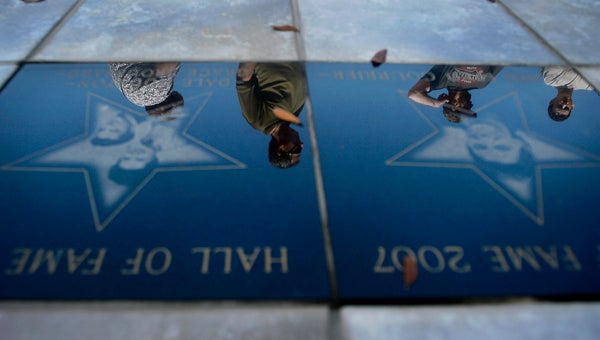Lawmakers criticize details on health care cuts
Published 11:56 pm Monday, July 23, 2012
BATON ROUGE (AP) — Louisiana lawmakers bristled Monday about getting few details and no ability to decide the $523 million in budget cuts Gov. Bobby Jindal’s administration has made to health care programs, largely to LSU’s safety net health care facilities.
Several complained the governor’s top leaders weren’t explaining the gravity of the slashing and the implications on the LSU network of public hospitals and clinics that care for the poor and uninsured in a state where one in five residents don’t have health insurance.
“It seems like it’s a lackadaisical approach to the cuts. These are, in my experience, the largest cuts I’ve ever seen,” said Sen. Francis Thompson, D-Delhi, usually a Jindal ally.
Commissioner of Administration Paul Rainwater, the governor’s chief budget adviser, defended the approach, saying the cuts devised by him and Health and Hospitals Bruce Greenstein were carefully crafted to try to protect services while also modernizing the state’s approach to health care.
“It has not felt lackadaisical to me,” Rainwater said. He told lawmakers, “What we’re talking about is building something that is much more sustainable in the long-term.”
The cuts are tied to a drop in Louisiana’s federal Medicaid funding that was passed in congressional legislation after the state’s 2012-13 budget was already crafted. The Jindal administration levied two-thirds of the cuts on the LSU safety-net hospital system, which will lose $329 million, or one-quarter of its entire budget for the fiscal year that began July 1.
When asked, Rainwater said the governor doesn’t support the calling of a special session for lawmakers to weigh in on how the budget cuts are divvied up.
Members of the Joint Legislative Committee on the Budget complained they learned little after hours of testimony from Rainwater and Greenstein.
“I can’t leave here and answer a question,” said Sen. Sherri Smith Buffington, R-Keithville.
Greenstein urged lawmakers to “wait for a plan” and give LSU time to devise scenarios for the cuts.
“That’s easy to say, but I’m the guy that’s got to go back home and take those calls from people out there who are incredibly worried and fearful about what’s going to happen,” said Sen. Ronnie Johns, R-Sulphur.
LSU’s vice president for health affairs, Fred Cerise, said his board has asked him to draw up plans that would spread out the cuts without shuttering facilities and to drum up ideas for generating new sources of income for the hospitals.
“They’ve made it clear they don’t want to close any hospitals,” Cerise said.
Greenstein, Rainwater and Jindal allies continue to talk of the need to modernize the LSU hospital system, improve efficiencies and rely on more partnerships with private health care facilities. They said they were consulting with private health care leaders and looking at university medical centers in other states.
But they offered few details Monday of how a revamped LSU hospital and clinic network would look or how it could be done so quickly, even as lawmakers pressed for more information.
“What we’re doing is we’re building it as we move,” Rainwater said. “We’re acting aggressively now.”
“I would like to see details. I don’t like ‘Trust me,”’ Thompson replied. “I don’t want to build an automobile as we drive down the road.”
Lawmakers repeatedly said they couldn’t see how the deep cuts could be made to LSU’s health care facilities without hospital closures.
“We’re going to close some hospitals or have really cruddy service,” said Sen. Dan Claitor, R-Baton Rouge.
Much of the care provided by the LSU hospital system involves outpatient care, like doctor visits. Cerise said the public health care facilities have 1.6 million outpatient clinic visits a year, 400,000 emergency room visits and 60,000 inpatient admissions.
He also defended the care, after repeated suggestions from Jindal administration leaders that the LSU model was outdated. He said the university-run hospitals have high quality rankings and provide more efficient care when compared to some of the state’s private hospitals.
“It’s a modern system,” Cerise said.






